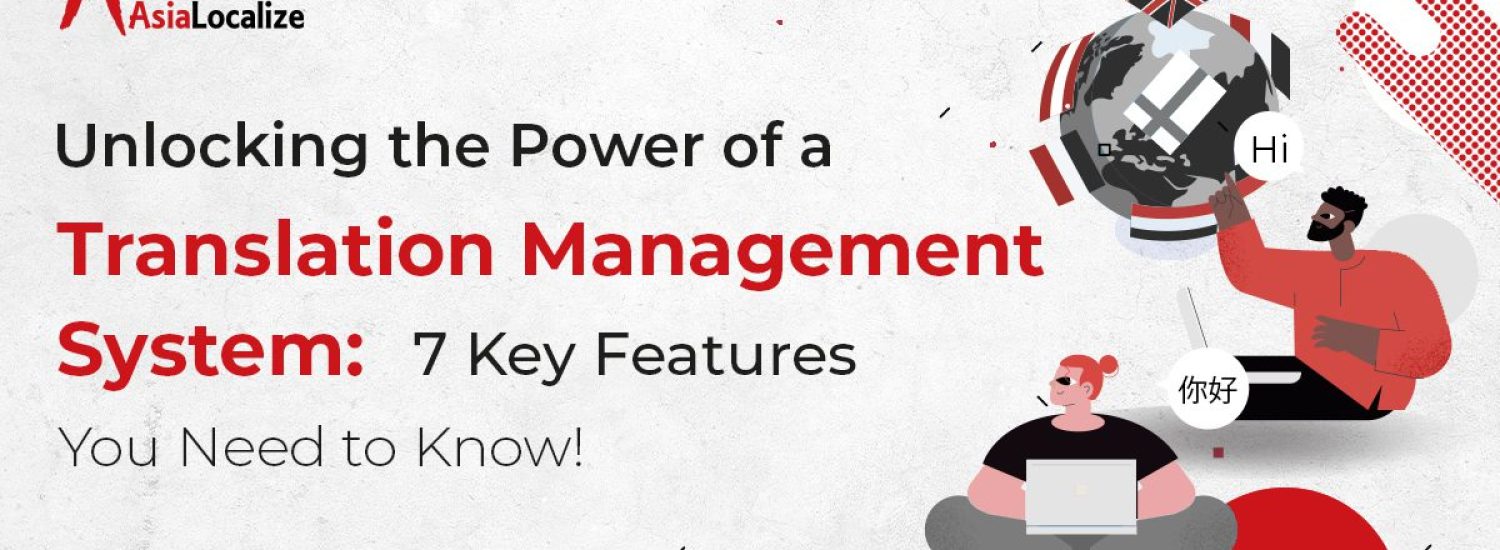Imagine a project manager juggling multiple parties across different countries—translators, reviewers, developers, and designers — all working under tight deadlines to support their clients’ language needs. The urgency and workload can quickly become overwhelming.
Managing and delivering such projects requires bringing the power of technology to the scene, especially translation management systems with their robust features.
Discover why it’s so essential for you to integrate a translation management system into your translation process, and unlock the top 7 features that a TMS holds.
What is a Translation Management System TMS?
A translation management system (TMS) is software designed primarily to enable translation and localization companies to streamline their processes.
It empowers teams to automate manual and repetitive tasks, thereby simplifying the management of complex projects across different languages and even dialects, putting them in control of the whole process.
Under one roof, project managers are able to assign tasks, manage different translation teams from all over the world, and upload content in multiple languages.
For example, updating translations when changes occurred in the source content previously required many steps without a Translation Management System. Now, all of this and more can be done using one software, saving time and accelerating time to market. From extracting and translating content to reviewing and embedding modifications, all of this and more can be done using a TMS.
Key Benefits of Translation Management Software
A translation management tool makes life easier for language service providers. In the age when TMS didn’t exist, emails were primarily used for communication, task assignment, file sharing, and approval processes, while spreadsheets tracked project status, resource management, cost estimation, quality control, and terminology management.
With TMS, manual processes have become a thing of the past, relieving teams from the burden of managing translation processes and localization workflows manually. And this allows them to focus on more strategic tasks.
Here are the benefits of localization tools:
Reduced Translation Costs & Faster Time to Market
TMS automates repetitive and manual tasks and enables translation teams to handle large-volume projects more efficiently. This not only saves money but also accelerates the time to market, giving companies a competitive edge when tapping into new markets.
For instance, with an integrated translation memory, teams can reuse similar segments across various projects, significantly cutting down on repetitive work. This reuse of content leads to substantial budget reductions throughout the translation process.
Enhanced Collaboration and Increased Productivity
TMS keeps all project team members, regardless of their location, updated with all ongoing activities, thereby enhancing team collaboration. Its functionalities, including real-time notifications and timely delivery of status updates, significantly improve productivity and efficiency.
Improved Translation Quality
You can’t imagine how a slight error could frustrate and even offend your target audience. That’s not the worst-case scenario that could happen. A poor translation could sometimes risk people’s lives and lead to serious legal consequences.
A translation management system helps translation teams maintain the highest quality and consistency. How?
Usually, TMS has quality assurance tools to check for terminology inconsistencies, typos, formatting issues, and more which can be of great benefit for maximizing quality when coupled with human QA.

Top 7 Features of a TMS & How it Can Streamline Your Localization Workflow
1-Project Management
With no need to fall through different platforms, project managers will be able to take care of daily repetitive tasks, eliminating manual effort with the help of TMS.
An effective Translation Management System will be able to handle the following functionalities and more:
- Assign specific tasks to team members and monitor their progress in real-time
- Enable seamless sharing of project-related content among team members
- Set and manage project timelines effectively
- Notify team members of any unexpected changes
- Ensure that projects stay on track and are completed within the specified timeframes
- Manage permissions for translation databases
2-Translation Memory
Translation memory is a sophisticated database that archives previously translated content, enabling translators to reuse it for later projects and significantly reducing redundancy in translation projects. But how does this technology function in practice?
As a translator begins their work, the translation memory system automatically scans for corresponding matches in its database. These matches fall into two primary categories:
- Exact Matches: It’s when the source segment is 100% identical to the text translated in the past.
- Fuzzy Matches: It’s when the source segment is similar but not identical to the text translated in the past.
3-Terminology Management
Terminology Management TM is specific to maintaining terms and phrases associated with a particular industry, company, or subject matter.
It ensures consistent language usage across various translation projects and enforces controlled vocabulary, allowing translation teams to maintain terminology consistency and reducing the need for extensive review and editing.
This, in turn, streamlines the translation process and ensures that the final output adheres to the desired quality standards.
4-Machine Translation Integration
Usually, a translation management system has a built-in machine translation feature that enables translators to translate a whole document into another language in a matter of seconds.
While MT is great for large-volume projects, you can’t rely solely on it to deliver reliable translations. That’s why human intervention is indispensable, especially in specialized and creative translations. Through post-editing translation services, you will be able to enjoy the benefits of both MT and human expertise.
5-Reporting and Analytics
A translation management system enables project managers to track progress, stay updated in real-time, and check metrics on word counts, costs, timelines, and more. This enables them to gain valuable insights and accordingly make data-driven decisions.
6-Collaboration Tools
TMS should offer a range of collaboration tools, which may include the following:
- In-platform reviewer comments for seamless communication and feedback
- Centralized file sharing to ensure all team members have access to the necessary documents
- A translator portal for task assignments and progress tracking.
All of these features contribute to more effective collaboration and streamlined localization workflows.
7-Integration Capabilities
Integration capabilities are crucial for a Translation Management System (TMS) to streamline the translation process.
With API-first systems, TMS can connect seamlessly to various platforms and applications, enabling efficient sharing and management of multilingual content across the entire supply chain.
This integration capability not only simplifies the localization process but also ensures that the most up-to-date content is accessible and consistent throughout the entire translation and localization workflow.
With a TMS’s many benefits and features, translation management systems aren’t just an option now. They have become integral in the translation and localization industry, saving many hours spent on manual work and workflow management. All of which contribute to cost mitigation (through saving assets and time).











